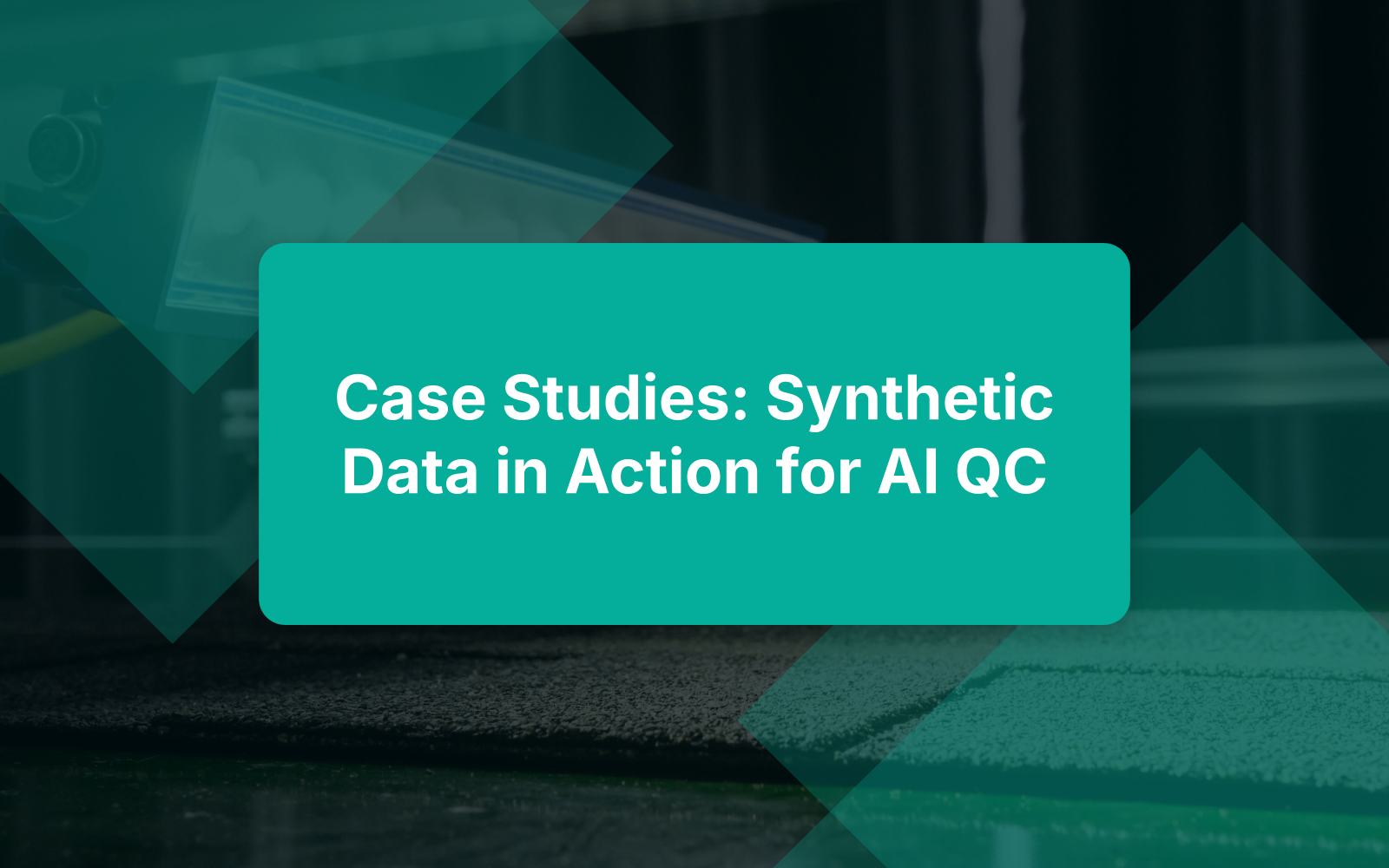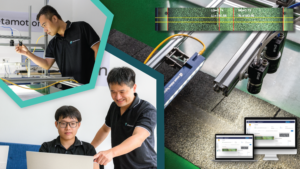In the realm of AI-driven quality control (QC), synthetic data emerges as a transformative resource. It offers the volume and diversity needed to train machine learning models effectively. By using synthetic data, businesses can simulate a wide array of scenarios and defects without bearing the time and cost burdens traditional data collection methods typically require. In this article, we explore compelling case studies that showcase the practical applications of synthetic data in AI QC, emphasizing its strengths, particularly in dynamic production lines and robust defect simulations.
Understanding Synthetic Data
Definition and Purpose
Synthetic Data: Information generated by algorithms, not real-world events. Learn more.
Mimics Real Data: Captures statistical properties akin to genuine data.
AI Training: Bridges data gaps where real-world data is scarce or expensive.
Expansive Exploration: Enables training on diverse, hypothetical scenarios.
Advantages of Synthetic Data
Cost-Effective: Saves time and expenses related to data collection.
Simulate Rare Edge Cases: Generates conditions absent in real datasets.
Enhance Model Robustness: Trains algorithms on a comprehensive range of data.
Amplify Diversity and Volume: Leads to better model accuracy and reliability.
Synthetic data is essential for developing efficient AI models, forming a cornerstone for innovative quality control methods.
Situation 1: Dynamic Production Lines in Manufacturing
Background
Situation: A manufacturing company operates several assembly lines with varied products and speeds.
Challenge: Ensuring QC amid inconsistent production rates.
Need: Rapid processing and adaptation, as traditional data collection doesn’t suffice.
Implementation of Synthetic Data
Solution:
The company employs synthetic data to handle production variability.
Process:
Generate synthetic images and scenarios replicating diverse production conditions (e.g., high-speed outputs, downtimes).
Simulate defects tied to specific conditions for thorough AI training.
Use artificial defect examples (e.g., faulty assemblies due to speed discrepancies).
Benefits:
Streamlines processes and cuts dependence on expensive, time-consuming real-world data collection.
Results Achieved
Improvement: Substantial boost in defect detection accuracy.
Efficiency: Model recalibration reduced from weeks to days.
Agility: Enhanced readiness for varied production scenarios.
Outcome: A more agile QC process, adapting swiftly to changing manufacturing demands.
Situation 2: Robust Defect Simulations for Quality Control
Background
Imagine a company grappling with high defect rates. This situation is common in industries where precision is crucial. Defects can lead to returns, rework, and a damaged reputation. The company realized it needed a comprehensive understanding of its defect landscape, highlighting the necessity for diverse defect scenarios to train their AI models effectively.
Implementation of Synthetic Data
To address the challenge, the company harnessed synthetic data. By creating simulations representing numerous defect types—ranging from minor blemishes to major failures—they explored scenarios too rare or costly to recreate in reality. This augmented their AI QC frameworks by moving beyond historical defect images, enabling better detection of potential issues.
Results Achieved
The results were notable. With synthetic data integration, the company experienced a substantial reduction in undetected defects. AI models became more proficient in identifying issues that might have been overlooked. Detection rates improved, and model retraining cycles became significantly faster. This adaptability fostered a more responsive system, enhancing quality metrics and production line reliability.
Situation 3: Data-Driven Quality Control in Electronics Manufacturing
Background
The electronics manufacturing industry is rapid and ever-evolving. Companies face the dual challenge of ensuring high quality while introducing new, complex products. Stakes are high; even small defects can lead to recalls and financial damage.
Implementation of Synthetic Data
Electronics manufacturers turned to synthetic data, simulating various defective samples and conditions. This process created synthetic representations of potential product failures due to environmental impacts like temperature or humidity fluctuations. By integrating this data, AI systems could learn from scenarios the production line had yet to encounter.
Results Achieved
Manufacturers reported streamlined QC processes with notable throughput increases. AI systems adapted quickly to new product specifications, improving accuracy and speed in assessments. This flexibility allows smoother technological shifts, maintaining high standards without reducing efficiency. The application of synthetic data proves transformative, leading to higher quality products and enhanced customer satisfaction.
Lessons Learned from These Case Studies
Best Practices in Synthetic Data Utilization
Balancing Synthetic and Real Data
Combine synthetic data’s flexibility with real-world data’s context, achieving robust models.Continuous
Model Updates
Regularly updating models with new synthetic data to mirror evolving conditions keeps defect detection relevant and effective.
Key Takeaways for Businesses
Develop Robust AI Quality Control Strategies
Form a well-rounded strategy incorporating synthetic data for quality improvement. Focus on addressing specific production challenges effectively.
Shift Mindsets Towards Embracing Synthetic Data
Overcome hesitance to utilize synthetic data over traditional methods. Embrace it as a strategic tool for innovation and improved product quality.
For further guidance on integrating AI into QC, check out this practical step-by-step guide.
Conclusion
Synthetic data has left a significant impact on AI-driven QC, proving to be an essential asset. The case studies demonstrate the flexibility and long-term benefits of integrating synthetic data into QC processes. By enhancing defect detection and navigating complex production conditions, companies can optimize their AI models more efficiently. As industries adapt to rapid changes and increased demands, the ability to harness synthetic data becomes increasingly crucial. This shift not only boosts model performance but also ensures consistently high-quality products, paving the way for continued competitive advantage in the market.
To explore further, delve into synthetic vs. real data discussions and learn more about Industry 4.0 from McKinsey.





